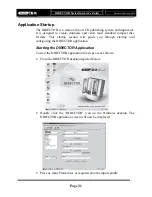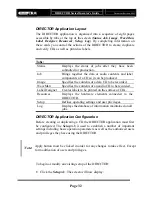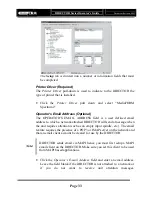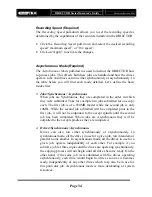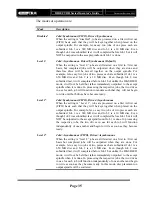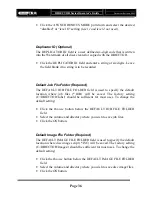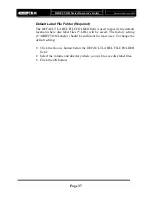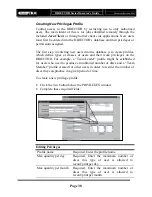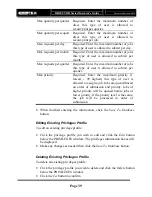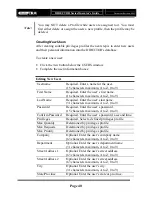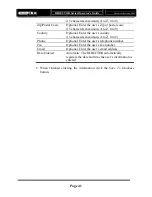
DIRECTOR Series Operator’s Guide
Document Revision: 0802
Page 34
Recording Speed (Required)
The
Recording Speed
pull-down allows you to set the recording speed as
determined by the capabilities of the recorders installed in the DIRECTOR.
•
Click the
Recording Speed
pull down and select the desired recording
speed “maximum speed”, or “16x speed”.
•
Click on “Apply” to activate the changes.
Asynchronous Mode (Required)
The
Asynchronous Mode
pull-down is used to instruct the DIRECTOR how
to process jobs. This affects both how jobs are handled and how the drives
operate. Jobs and drives can run either synchronously or asynchronously. In
the table below you will find each mode detailed. Let’s define the basic
modes first:
Jobs=Synchronous / Asynchronous
When jobs are Synchronous, they are completed in the order in which
they were submitted. Take for example two jobs submitted for one copy
each. The first job is of a 650MB master while the second job is only
10MB. While the second job submitted will be completed prior to the
first job, it will not be outputted to the accept spindle until the second
job has been completed. When jobs are Asynchronous they will be
outputted to the accept spindle as they are completed.
Drives=Synchronous /Asynchronous
Drives can also run either synchronously or asynchronously. In
synchronous mode, all the drives in use for a given job, run in tandem or
parallel to one another. In asynchronous mode, all the drives in use for a
given job, operate independently of each other. For example if you
submit a job for three copies and the drives are operating synchronously,
the copying process will not begin until all drives become ready. On the
other hand, if the same job were submitted with the drives operating
asynchronously, each drive would begin to write as soon as it becomes
ready, independently of any other drives which may also be in use for
this particular job. Asynchronous mode is more demanding of system
resources.












